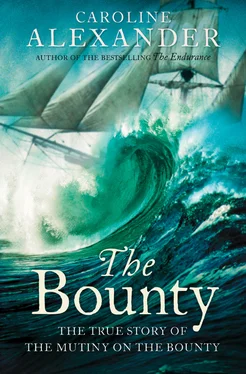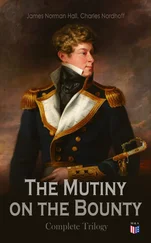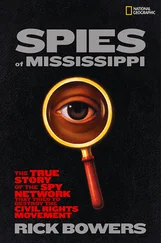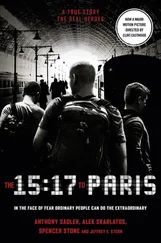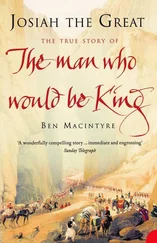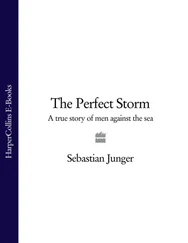With the interior refinements out of his hands, Bligh spent the months of August and September making his ship as seaworthy as possible for her long, dangerous voyage. Her masts were shortened so as to make her more stable, and her wooden hull was sheathed with copper against the ravages of ship worm. Nineteen tons of iron ballast were stowed instead of the customary forty-five; Bligh reckoned that the eighteen months of stores he was carrying would make up the balance.
The Bounty ’s rating as a cutter also determined the establishment she would carry. There would be no commissioned officers apart from Bligh; the warrant officers would include a master, boatswain, carpenter, gunner and surgeon. In the interest of economy, and as was not uncommon, the role of purser had been dispensed with. A purser, the purveyor of all official stores, in effect purchased provisions from the Navy Board at the outset of a voyage, and sold back what had not been used on his return. Because he was expected to supplement his lowly salary by profits received, he had strong self-interest to stint on provisions, for which reason he was generally regarded by the sailors with suspicion and contempt. On the Bounty , the duties of this office were to be fulfilled by the commanding officer – Lieutenant Bligh.
Bligh’s commission had commenced on 16 August, and was followed only days later by the appointment of the first warrant officers. John Fryer, the Bounty’s new master, was slightly older than Bligh; with his rather refined features and pensive air, he called to mind a dignified school headmaster. Fryer had been assigned the small cabin opposite Bligh’s, on the other side of the aft hatchway.
Only weeks before he joined the Bounty , Fryer, a widower, had married a ‘Spinster’ named Mary Tinkler, from Wells-next-the-Sea, in Norfolk, where he too had been born. This marriage held some consequence for the voyage. Fryer, using his modest interest, had secured a position for his brother-in-law, Robert Tinkler, nominally as an AB, or able seaman, with the understanding that he was to be considered a young gentleman. Although Tinkler was entered on the ship’s muster as being seventeen years of age, he was in fact only twelve.
Fryer had entered the navy only seven years earlier. As was common for a master, he had transferred from the merchant service, where he had seen some excitement; around 1776, he had been mate on a vessel captured by French privateers and had spent over a year and a half in prison. John Fryer’s role as master on the Bounty was the same as that played by Bligh on Cook’s Resolution. However, Bligh had been a precocious twenty-one-year-old lieutenant-in-waiting, while John Fryer was a thirty-five-year-old man who was unlikely to advance higher in nominal rank.
Bligh’s failure to gain promotion for this breadfruit voyage bore implications well beyond the fact that he would continue to be paid as a lieutenant, and nowhere were the consequences to become more overtly apparent than in his relationship with Master Fryer. While Bligh considered himself to be only a formality away from the coveted promotions that would secure him his captaincy, in the eyes of John Fryer, Mr Bligh was still merely a lieutenant. In theory, the master bore responsibility for the navigation of a ship; however, William Bligh was by now an expert navigator, trained under Captain Cook, and one of the few men in the British navy with experience in the South Seas. It was not then to be expected that he would surrender his own expertise on so critical a subject to the middle-of-the-road know-how of Master Fryer. Under William Bligh, the master was in fact redundant.
Thomas Huggan, an alcoholic surgeon, was the second warrant officer appointed. ‘My surgeon, I believe, may be a very capable man, but his indolence and corpulency render him rather unfit for the voyage,’ Bligh wrote as tactfully as he could to Sir Joseph Banks, whom he was careful to keep apprised of all developments. ‘I wish I may get him to change.’
Although this proved impossible, Banks did succeed in getting the Admiralty to agree to an assistant surgeon. Eventually this position was taken by Thomas Denman Ledward, a man in his late twenties from a distinguished family of apothecaries and physicians and the first cousin of Thomas Denman, destined to become Lord Chief Justice.
‘I am to enter as A.B.!’ Ledward wrote to his uncle shortly before sailing – the ever handy ‘able seaman’ designation being invoked to comply with the ship’s official numerical establishment. ‘But the Captain is almost certain that I shall get a first Mate’s pay, & shall stand a great chance of immediate promotion,’ and – a further agreeable incentive – ‘if the Surgeon dies (& he has the character of a drunkard) I shall have a Surgeon’s acting order.’ An additional inducement to take on what surely promised to be a thankless job was that Sir Joseph Banks had offered his ‘interest to any surgeon’s mate who would go out as able seaman.’
On the same day that Fryer and Huggan were appointed, Thomas Hayward also joined the Bounty , nominally as another AB but shortly to be promoted to one of the two coveted midshipman allotments. This nineteen-year-old officer had been recommended by one of Banks’s old and admired colleagues, William Wales, who had been the astronomer on Cook’s second voyage, and who was now mathematical master at Christ’s Hospital, that extraordinary charity school that educated, among other luminaries, Charles Lamb and Samuel Taylor Coleridge; indeed, some of the haunting ice imagery of Coleridge’s ‘Rime of the Ancient Mariner’ comes from William Wales’s description of crossing into Antarctic waters on Cook’s voyage. Wales taught mathematics, astronomy, navigational skills and surveying at Christ’s Hospital, the object of his particular attention being that circle of boys destined for sea careers. Lamb, describing his old teacher, claimed that ‘all his systems were adapted to fit them for the rough element which they were destined to encounter. Frequent and severe punishments, which were expected to be borne with more than Spartan fortitude, came to be considered less as inflictions of disgrace than as trials of obstinate endurance. To make his boys hardy, and to give them early sailor-habits, seemed to be his only aim.’
Wales was also secretary to the Board of Longitude and had been responsible for publishing the scientific observations of Cook’s voyage – he was, then, a man for whom Banks had high regard.
‘I beg leave to trouble you with the Name of the Young Gentleman who is desirous of going with Capt. Bligh and whom I mentioned to you sometime since,’ Wales wrote to Banks on 8 August. ‘It is Mr. Thomas Hayward, Son of Mr. Hayward, a surgeon at Hackney.’ The young man who was the object of Wales’s interest was the eldest son of nine surviving children. Thomas Hayward had entered the navy’s books as a captain’s servant aboard the Halifax at the tender age of seven, where he served, on the books at least, for the next four years. From age eleven to fourteen, however, Hayward was not at sea, but was presumably being schooled. In 1782, he was back on the navy’s books and for the next five years served as able seaman or midshipman aboard a number of ships. He came to the Bounty from the 24-gun frigate Porcupine , which had been patrolling off the Irish coast. Possibly no other promising young gentleman in His Majesty’s Royal Navy was to endure such a spectacular run of bad professional fortune as Thomas Hayward.
Over the next weeks, the rest of the crew continued to trickle in, acquired from other ships, from former service with Bligh or from those with interest to get them their positions. A number of these deserted: the names John Cooper, George Armstrong, William Hudson, Samuel Sutton, marked ‘R’ for ‘Run’, are among those that appear on the Bounty muster only briefly before vanishing from this story. These desertions included the company’s only two pressed men, seamen forced against their will into the King’s service. Bligh claimed that it was only after leaving Tenerife that he ‘now made the ship’s company acquainted with the intent of the voyage’, but it is unlikely that the men had remained in ignorance until this time; the preparations themselves would have given much away. Thomas Ledward, the young assistant surgeon, reported excitedly to his uncle before the Bounty sailed that he had agreed to go ‘to Otaheite to transplant Bread fruit trees to Jamaica’, which would indicate there were no secrets here. It is a striking fact that, with the desertion of the pressed men, the Bounty carried an all-volunteer crew; surely her destination – Tahiti, the Pacific islands – was one reason.
Читать дальше
